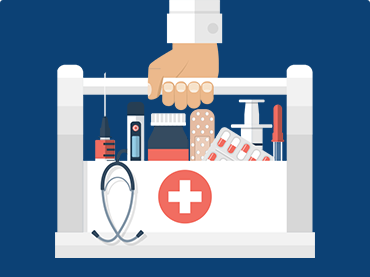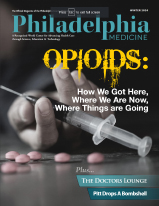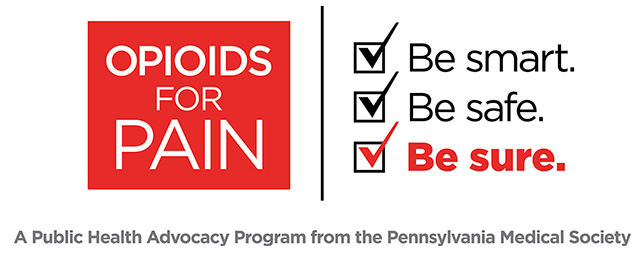On April 22, the U.S. Department of Health and Human Services released the following COVID-19 update:
New Announcements on Provider Relief Fund Allocations
On April 22, HHS announced additional information about allocations of the $100 billion Provider Relief Act created in the CARES Act. As the Secretary said again on the 22nd, “our goal in disbursing the money from the CARES Act [is] to get it out the door as quickly as possible while targeting it to those who are most impacted by the pandemic.” Below is a short outline of the information released, but for those of you who want more detail, there are two resources: (1) Fact Sheet and (2) Secretary Azar’s remarks at the top of the day’s press briefing on the announcement.
High Level Description of PRF Allocation Information Released April 22:
- $50 Billion General Allocation to Providers: $50 billion of the PRF will be allocated for general distribution to Medicare facilities and providers impacted by COVID-19, based on eligible providers’ 2018 net patient revenue. The distribution will also take into consideration the challenges faced by facilities serving a significantly disproportionate number of low-income patients, as reflected by their Medicare Disproportionate Share Hospital (DSH) Adjustment. As you know, $30 Billion of the $50 has already been distributed, the $20 billion balance will be distributed on a rolling basis, beginning at the end of this week.
- $10 billion for Providers in Hot Spots: $10 billion of the PRF will be allocated for a targeted distribution to hospitals in areas that have been particularly impacted by the COVID-19 outbreak. Note the deadline for submitting certain information was April 23rd.
- $10 billion for Rural Health Providers: $10 billion will be allocated for rural health clinics and hospitals, most of which operate on especially thin margins and are far less likely to be profitable than their urban counterparts.
- Reimbursement for Providers Treating Uninsured COVID-19 Patients: Every health care provider who has provided treatment for uninsured suspected or confirmed COVID-19 patients on or after February 4, 2020, can request claims reimbursement from the PRF at Medicare rates, subject to available funding. Providers can resister for the program on April 27, 2020 through a portal, https://www.hrsa.gov/coviduninsuredclaim, and begin submitting claims in early May. More detail is found here.
- Other? Some savvy readers will note that this does not necessarily add up to the full $100 billion. On that score, also announced is that some providers will receive further, separate funding, including skilled nursing facilities, dentists, and providers that solely take Medicaid.
Other releases from the 22nd:
Resources and Funding
More Good News for Rural Hospitals & COVID-19: HRSA awarded nearly $165 million to combat the COVID-19 pandemic in rural communities. These investments will support 1,779 small rural hospitals and provide additional funding to 14 HRSA-funded Telehealth Resource Centers (TRCs) to provide technical assistance on telehealth to help rural and underserved areas combat COVID-19.
Telehealth Resources: A new website, https://telehealth.hhs.gov/, went live on the 22nd to provide information about the latest federal efforts to support and promote telehealth services. It provides helpful information about telemedicine and links to tools and resources for practitioners. Accompanying the release, the Surgeon General released a blog directed to healthcare providers, urging them to join the telehealth revolution. He notes that healthcare providers have a unique opportunity to integrate telemedicine into their practice.
Updated FAQs on COVID-19: The FDA updated their general FAQ page to include updated consumer information on serology and home tests. HRSA updated their FAQs to include additional information on funding, program oversight and monitoring, providing care during emergencies, FTCA requirements, service delivery, temporary sites, quality improvement, and partnerships and special populations.
Mental Health Resources: SAMHSA released a training and technical assistance document that includes products and resources (e.g., webinars) that can be helpful when coping with the effects of widespread public health crises, such as psychosocial impacts of disasters and supportive practices for mental health professionals.
Mental Health Webinar for Faith Leaders: HHS’s Partnership Center is hosting a webinar series on mental health and COVID-19 for faith and community leaders. This webinar will share what secondary mental health “aftershocks” might be on the horizon, offers the perspective of mental health professionals in this moment, and what faith leaders are preparing to address. The first webinar will be on April 28 at 12 PM.
Intimate Partner Violence and Child Abuse Considerations: SAMHSA has released a White Paper on IPV and Child Abuse Considerations during COVID-19. The paper includes background information and resources for additional information.
PPE and Supplies
Optimizing PPE: CDC updated their guidance on strategies to optimize PPE. Outlines strategies can be considered during severe PPE shortages and should be used with the contingency options to help stretch available supplies for the most critical needs. As PPE availability returns to normal, healthcare facilities should promptly resume standard practices.
Decontaminating N95 Respirators: The FDA issued an EUA for the emergency use of the Sterilucent HC 80TT Hydrogen Peroxide Sterilizer for use in decontaminating compatible N95 or N95-equivalent respirators for single-user reuse by healthcare providers to prevent exposure to pathogenic biological airborne particulates when there are insufficient supplies of face-filtering respirators (FFRs) resulting from the COVID-19 pandemic. The Sterilucent Sterilizer System is an FDA-cleared sterilization system for terminal sterilization of certain types of medical devices. This EUA authorizes expansion of the indication for decontamination of compatible N95 respirators for up to 10 decontamination cycles per respirator.
Flexibility for Food Supply Chain: A new “FDA Voices” was issued, FDA Provides Flexibility to the Food Industry to Support Food Supply Chain and Meet Consumer Demand During COVID-19. It explains how the agency is working closely with the food industry and the U.S. Department of Agriculture to provide flexibility regarding federal food labeling and other requirements when possible, so consumers have access to the food they want. To achieve that goal, the FDA has issued temporary guidance that provides flexibility to various segments of the food industry—restaurants, food manufacturers, producers and retail establishments—to help support the food supply chain and meet consumer demand in this time of crisis.
Testing and Treatment
Call for Plasma Donations: FDA updated information and continues to urge recovered patients to donate plasma. If you have fully recovered from COVID-19, you may be able to help patients currently fighting the infection by donating your plasma. Because you fought the infection, your plasma now contains COVID-19 antibodies. These antibodies provided one way for your immune system to fight the virus when you were sick, so your plasma may be able to be used to help others fight off the disease.
IHS Distribution of 250 Abbott Testing Devices: On April 6, HHS announced it was purchasing the ID NOW COVID-19, a rapid acting, point-of-care test developed for state, territorial, and tribal public health labs by Abbott Diagnostics Scarborough, Inc. (Abbott Diagnostics). The Indian Health Service (IHS) has been given priority access to rapid point-of-care COVID-19 testing systems as part of this effort. The IHS received 250 devices and an initial 9,000 individual tests to distribute to selected IHS and Tribal locations. As of April 21, 2020, all analyzers have been distributed to 192 different IHS and tribal sites.
Increasing Kids’ Access to Asthma Medications: On April 21, the FDA approved an Abbreviated New Drug Application (ANDA) for Albuterol Sulfate Inhalation Solution 0.021% and 0.042% for the relief of bronchospasm in patients 2 to 12 years of age with asthma. The agency recognizes the increased demand for albuterol products during the novel coronavirus pandemic and remains deeply committed to facilitating access to medical products to help address critical needs of the American public.
Diagnostics Update: During the COVID-19 pandemic, the FDA has worked with more than 350 test developers who have said they will be submitting emergency use authorizations (EUA) requests to FDA for tests that detect the virus. To date, the FDA has issued 42 individual emergency use authorizations for test kit manufacturers and laboratories. In addition, 17 authorized tests have been added to the EUA letter of authorization for high complexity molecular-based laboratory developed tests (LDTs). The FDA has been notified that more than 210 laboratories have begun testing under the policies set forth in the HHS COVID-19 Policy for Diagnostic Tests for Coronavirus Disease-2019 during the Public Health Emergency Guidance.
Increasing Flexibilities
Increasing Hospital Capacity: CMS issued critical guidance allowing licensed, independent freestanding emergency departments (IFEDs) in Colorado, Delaware, Rhode Island, and Texas to temporarily provide care to Medicare and Medicaid patients to address any surge. IFEDs generally offer a range of services including basic imaging services, computed tomography (CT) scans, ultrasound, and basic on-site laboratory services. Current law does not recognize IFEDs as a certified Medicare provider, meaning they cannot bill Medicare and Medicaid for services. However, during this public health emergency these entities can be temporarily certified as a hospital to increase healthcare system capacity as part of each state’s pandemic plan.
Confirmed COVID-19 in Cats: The CDC announced the first confirmed cases of COVID-19 infection in two pet cats. These are the first pets in the United States to test positive for SARS-CoV-2. The cats live in two separate areas of New York state.




